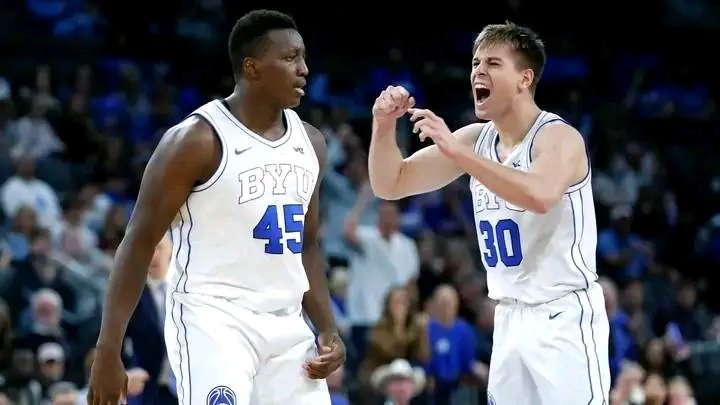From WCC Struggles to Big 12 Breakthrough: How BYU Basketball Defied Expectations in 2025
Provo, Utah — When BYU basketball wrapped up back-to-back 16–15 seasons in the West Coast Conference (WCC), expectations were tempered heading into their inaugural season in the Big 12 — one of the most competitive basketball leagues in the nation. But rather than struggle against tougher competition, the Cougars surprised many by finishing the 2024–2025 season with an 18–14 record, showing significant improvement despite a steep jump in conference difficulty.
So how did a team that hovered just above .500 in a mid-major conference manage to find new life in a Power Five league known for its relentless schedule?
The transformation began with coaching. Head coach Mark Pope, entering his sixth year at the helm, knew the program needed more than just minor tweaks to compete in the Big 12. From the offseason onward, Pope emphasized physicality, speed, and depth—hallmarks of Big 12 basketball. That meant reevaluating the roster, revamping the team’s defensive philosophy, and attacking the transfer portal with urgency and precision.
One of the biggest catalysts was the influx of experienced talent. Pope and his staff were aggressive in recruiting, landing several key transfers with high-major experience. These additions provided immediate upgrades in toughness and on-ball defense—areas where BYU had struggled in the WCC. The new faces meshed well with returning players like Spencer Johnson and Fousseyni Traore, who embraced the challenge of a new league with seasoned maturity.
The Cougars’ playing style also evolved. In past seasons, BYU had leaned heavily on perimeter shooting, often struggling when shots didn’t fall. This year, the team adopted a more balanced approach—attacking the rim, moving the ball fluidly, and getting to the free-throw line more consistently. Their offense became more dynamic and less predictable, which allowed them to compete with athletic, high-pressure Big 12 defenses.
Defensively, the Cougars made perhaps their most noticeable improvements. The team’s rotations were sharper, their rebounding improved, and they began to establish a defensive identity that had been missing in previous years. While not perfect, BYU held its own against some of the best offenses in the country, often making opponents work for every basket.
Another key factor: home-court advantage. The Marriott Center has always been one of the loudest arenas in college basketball, and Big 12 opponents got their first taste of its intensity. BYU won several critical home games against ranked opponents, building momentum and confidence as the season progressed.
There were still ups and downs, including road losses and some growing pains, but the overall trajectory was clear—BYU belonged in the Big 12. The Cougars finished with a winning record, secured a spot in the postseason discussion, and, more importantly, proved that they could hang with the elite.
What once seemed like a daunting leap became a statement of growth and resilience. From back-to-back mediocrity in the WCC to a respectable 18–14 debut in one of the toughest conferences in college basketball, BYU basketball took a bold step forward—and laid the foundation for an even brighter future.

